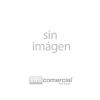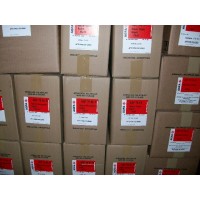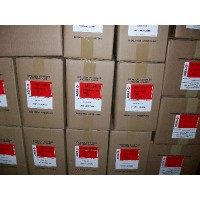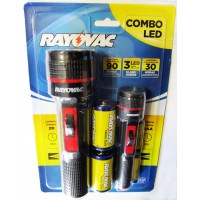Pelicula aérea Color Aviphot 100PE1

Descripción
Pelicula para aerofotografía marca Agfa
1 AVIPHOT COLOR X100 PE1
Colour negative film without colour mask
Aviphot Color X100 PE1 is a colour negative film without colour mask. It is suitable for technical, industrial and aerial photography. Processed in ASP 70 (or C-41) chemistry, the film shows a very adaptable image contrast with impressive sharpness and extremely low granularity. Well saturated colours can be obtained.
Thickness of the dimensionally stable polyester base: 0.10 mm (0.004").
Total film thickness: 0.127 mm (0.005").
Applications
•
This film can be used in Industrial Recording systems, such as equipment used for the plotting of graphs in control and monitoring devices by way of illuminated defection sources. • It can also be used in stereo image recording devices, either airborne or in ground based facilities for subsequent production of three dimensional plans, maps, etc.
• Aviphot Color X100 PE1 is used for aerial photography with a variety of cameras. Excellent images can be obtained from levels as low as 1500 ft up to high altitudes of 25,000 ft to 30,000 ft.
• Due to its extremely fine grain and high sharpness the film is very suitable for cartographic image acquisition and interpretation. Highest quality enlargements can easily be made.
• This film facilitates electronic image scanning. Because there is no colour mask, the usual orange colour does not have to be removed from the image colour. Even in absence of a colour mask, clean and saturated colours are reproduced.
• The absence of a colour mask allows faster production with contacting, printing onto black-and-white and colour paper, and scanning. It also facilitates focusing.
• Aviphot Color X100 PE1 can be copied onto Agfa Rapitone C1 and C2 paper or on the Agfa negative colour copying films Avitone CP 94 and Avitone CP 70.
Characteristics
Using the latest colour film technology, Aviphot X100 offers outstanding characteristics:
• Very high definition and very low granularity; a slight increase in grain is obtained when the film is pushed to its limit.
• Push processing by increasing either the developing time or the developer temperature will dramatically boost the image contrast. You can obtain smooth shadow areas with large-scale flights and low sun angles as well as high contrast images with small-scale applications.
• The excellent image quality is obtained due to the Agfa SEM (Surface Enhanced Multistructured) crystal technology and stacked multiple sensitised layers for each colour.
• The wide exposure latitude limits the need for repeat flights.
• There is no reciprocity failure for shutter speed ranging from 1/1000 up to 1 second.
����
��
Photographic information
Speed
•
ISO 100/21, ASA 100, DIN 21 for processing in Agfa ASP 70 Process at 37.8°C/100°F for 3 min 15 s developing time. • ISO 160/23, ASA 160, DIN 23 for processing in Agfa ASP 70 Process at 37.8°C/100°F for 5 min 20 s developing time.
Spectral sensitivity
The curves refer to a density of 1.0 above base fog. Sensitivity is reciprocal to the exposure (mJ/m
2) required to produce that particular density. Colour rendering
The colour rendering of Aviphot Color X100 is set for a colour temperature of 5500K. In absence of a colour mask, a very high activity of the inter-image effects amongst the dye layers ensures colour purity. During processing, this chemical activity amplifies the edge sharpness and reduces the granularity.
Granularity
The combination of the Agfa SEM crystal technology with the inter-image effect among the dye layers and the highly concentrated DIR (Developer Inhibitor Release) couplers throughout the film results in a substantial reduction of granularity. Levels remain very low when the film is processed at 37.8°C for less than 4 minutes.
Measured at a diffused visual density of 1.0 (48 μm aperture) RMS granularity value is 6 when the film is processed for 3 min 17 s.
Sharpness
The DIR technology makes the inhibitors in the emulsion active during the development in order to achieve better differentiation of densities within each colour. Visually, this results in clean cut edges and enhanced sharpness, independent of the processing time.
2
TOC (Target Object Contrast)
Measured according to ANSI PH 2.33-1980.
TOC 1000:1 = 150 lp/mm or 300 dots/mm.
TOC 1.6:1 = 80 lp/mm or 160 dots/mm.
These values are not affected by processing conditions in ASP 70.
Colour density curves
Exposure daylight 1/1000 s
Processing in ASP 70 at 37.8°C/100°F for 3 min 15 s.
Exposure daylight 1/1000 s
Processing in ASP 70 at 37.8°C/100°F for 4 min
3
Exposure daylight 1/1000 s
Processing in ASP 70 at 37.8°C/100°F for 5 min 20 s.
4
�� PET base (14): 100 μm Film structure
Layers 1 - 13: 22 μm
Back layer (15): 6μm
5 6
��
Production guidelines
Film handling
Wear cotton gloves before and after processing the film.
Darkroom lighting
The film must be handled in total darkness.
Exposure
Recommended speed setting: from 125 to 160 ASA.
Filters are not required because the emulsions are sensitive to daylight. Aviphot Color X100 is manufactured within strict tolerances and the spectral deviations are minimal.
Always make a series of test images representative of the exposure, flying altitude and atmospheric conditions in order to determine the optimum processing conditions.
Processing
Aviphot Color X100 is preferably processed in a processor with Agfa ASP70 Process (or the equivalent C-41) chemistry.
If you don't have your own aerial processor, specialised photo-labs can offer a solution: in general they have a lot of experience in processing Aviphot Color films. Don't forget to inform the flight crew about the required quality of the final result, enabling them to keep that into account on their next sortie.
Yellow streaks after processing
These yellow streaks are caused by a certain type of bleach solutions, containing ferric ammonium propylene diamine tetra-acetic acid or FePDTA. These types of bleaches require regular checking of the pH value and the concentration in the tank solution, which must vary within the tolerances specified by the bleach manufacturer.
Too low a concentration of the bleach and/or too high a pH value can cause yellow streaks. Usually the replenishment rate is too low, sometimes caused by adding insufficient concentrate during bleach recycling. The pH value should be at the lowest tolerance limit and may have to be decreased by adding acetic acid.
An adequate circulation of the solution in the bleach tank is necessary to avoid the formation of a high pH value where the film enters the tank (may be caused by carry-over of developer into the bleach tank).
For processing Aviphot colour film, Agfa supplies the following bleaches which do not contain FePDTA:
- ASP 70 BL-R (BL replenisher)
Below are the pH values and the specific gravity for 2 types of bleaches: Tolerances pH value at 25°C/77°F
Specific gravity at 25°C/77°F
Process solution
Fresh tank
Seasoned tank
Replenisher
Fresh tank
Seasoned tank
Replenisher
Agfa ASP 70 BL
6.0
5.9 – 6.1
5.7 – 5.9
1.167 – 1.173
1.164 – 1.171
1.167 – 1.173
Kodak Flexicolor Bleach III (PePDTA)
4.5 – 5.0
4.5 – 5.0
4.25 – 4.75
1.030 - 1.040
1.030 – 1.060
1.030 – 1.040
1 AVIPHOT COLOR X100 PE1
Colour negative film without colour mask
Aviphot Color X100 PE1 is a colour negative film without colour mask. It is suitable for technical, industrial and aerial photography. Processed in ASP 70 (or C-41) chemistry, the film shows a very adaptable image contrast with impressive sharpness and extremely low granularity. Well saturated colours can be obtained.
Thickness of the dimensionally stable polyester base: 0.10 mm (0.004").
Total film thickness: 0.127 mm (0.005").
Applications
•
This film can be used in Industrial Recording systems, such as equipment used for the plotting of graphs in control and monitoring devices by way of illuminated defection sources. • It can also be used in stereo image recording devices, either airborne or in ground based facilities for subsequent production of three dimensional plans, maps, etc.
• Aviphot Color X100 PE1 is used for aerial photography with a variety of cameras. Excellent images can be obtained from levels as low as 1500 ft up to high altitudes of 25,000 ft to 30,000 ft.
• Due to its extremely fine grain and high sharpness the film is very suitable for cartographic image acquisition and interpretation. Highest quality enlargements can easily be made.
• This film facilitates electronic image scanning. Because there is no colour mask, the usual orange colour does not have to be removed from the image colour. Even in absence of a colour mask, clean and saturated colours are reproduced.
• The absence of a colour mask allows faster production with contacting, printing onto black-and-white and colour paper, and scanning. It also facilitates focusing.
• Aviphot Color X100 PE1 can be copied onto Agfa Rapitone C1 and C2 paper or on the Agfa negative colour copying films Avitone CP 94 and Avitone CP 70.
Characteristics
Using the latest colour film technology, Aviphot X100 offers outstanding characteristics:
• Very high definition and very low granularity; a slight increase in grain is obtained when the film is pushed to its limit.
• Push processing by increasing either the developing time or the developer temperature will dramatically boost the image contrast. You can obtain smooth shadow areas with large-scale flights and low sun angles as well as high contrast images with small-scale applications.
• The excellent image quality is obtained due to the Agfa SEM (Surface Enhanced Multistructured) crystal technology and stacked multiple sensitised layers for each colour.
• The wide exposure latitude limits the need for repeat flights.
• There is no reciprocity failure for shutter speed ranging from 1/1000 up to 1 second.
����
��
Photographic information
Speed
•
ISO 100/21, ASA 100, DIN 21 for processing in Agfa ASP 70 Process at 37.8°C/100°F for 3 min 15 s developing time. • ISO 160/23, ASA 160, DIN 23 for processing in Agfa ASP 70 Process at 37.8°C/100°F for 5 min 20 s developing time.
Spectral sensitivity
The curves refer to a density of 1.0 above base fog. Sensitivity is reciprocal to the exposure (mJ/m
2) required to produce that particular density. Colour rendering
The colour rendering of Aviphot Color X100 is set for a colour temperature of 5500K. In absence of a colour mask, a very high activity of the inter-image effects amongst the dye layers ensures colour purity. During processing, this chemical activity amplifies the edge sharpness and reduces the granularity.
Granularity
The combination of the Agfa SEM crystal technology with the inter-image effect among the dye layers and the highly concentrated DIR (Developer Inhibitor Release) couplers throughout the film results in a substantial reduction of granularity. Levels remain very low when the film is processed at 37.8°C for less than 4 minutes.
Measured at a diffused visual density of 1.0 (48 μm aperture) RMS granularity value is 6 when the film is processed for 3 min 17 s.
Sharpness
The DIR technology makes the inhibitors in the emulsion active during the development in order to achieve better differentiation of densities within each colour. Visually, this results in clean cut edges and enhanced sharpness, independent of the processing time.
2
TOC (Target Object Contrast)
Measured according to ANSI PH 2.33-1980.
TOC 1000:1 = 150 lp/mm or 300 dots/mm.
TOC 1.6:1 = 80 lp/mm or 160 dots/mm.
These values are not affected by processing conditions in ASP 70.
Colour density curves
Exposure daylight 1/1000 s
Processing in ASP 70 at 37.8°C/100°F for 3 min 15 s.
Exposure daylight 1/1000 s
Processing in ASP 70 at 37.8°C/100°F for 4 min
3
Exposure daylight 1/1000 s
Processing in ASP 70 at 37.8°C/100°F for 5 min 20 s.
4
�� PET base (14): 100 μm Film structure
Layers 1 - 13: 22 μm
Back layer (15): 6μm
5 6
��
Production guidelines
Film handling
Wear cotton gloves before and after processing the film.
Darkroom lighting
The film must be handled in total darkness.
Exposure
Recommended speed setting: from 125 to 160 ASA.
Filters are not required because the emulsions are sensitive to daylight. Aviphot Color X100 is manufactured within strict tolerances and the spectral deviations are minimal.
Always make a series of test images representative of the exposure, flying altitude and atmospheric conditions in order to determine the optimum processing conditions.
Processing
Aviphot Color X100 is preferably processed in a processor with Agfa ASP70 Process (or the equivalent C-41) chemistry.
If you don't have your own aerial processor, specialised photo-labs can offer a solution: in general they have a lot of experience in processing Aviphot Color films. Don't forget to inform the flight crew about the required quality of the final result, enabling them to keep that into account on their next sortie.
Yellow streaks after processing
These yellow streaks are caused by a certain type of bleach solutions, containing ferric ammonium propylene diamine tetra-acetic acid or FePDTA. These types of bleaches require regular checking of the pH value and the concentration in the tank solution, which must vary within the tolerances specified by the bleach manufacturer.
Too low a concentration of the bleach and/or too high a pH value can cause yellow streaks. Usually the replenishment rate is too low, sometimes caused by adding insufficient concentrate during bleach recycling. The pH value should be at the lowest tolerance limit and may have to be decreased by adding acetic acid.
An adequate circulation of the solution in the bleach tank is necessary to avoid the formation of a high pH value where the film enters the tank (may be caused by carry-over of developer into the bleach tank).
For processing Aviphot colour film, Agfa supplies the following bleaches which do not contain FePDTA:
- ASP 70 BL-R (BL replenisher)
Below are the pH values and the specific gravity for 2 types of bleaches: Tolerances pH value at 25°C/77°F
Specific gravity at 25°C/77°F
Process solution
Fresh tank
Seasoned tank
Replenisher
Fresh tank
Seasoned tank
Replenisher
Agfa ASP 70 BL
6.0
5.9 – 6.1
5.7 – 5.9
1.167 – 1.173
1.164 – 1.171
1.167 – 1.173
Kodak Flexicolor Bleach III (PePDTA)
4.5 – 5.0
4.5 – 5.0
4.25 – 4.75
1.030 - 1.040
1.030 – 1.060
1.030 – 1.040





